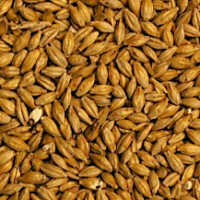First published in BEER magazine, May 2011. BEER is sent free every quarter to CAMRA members, who can also view it online. The magazine is additionally available in selected newsagents. Click on the beer names for more detailed notes on each beer.
Malted barley is one of the basic building blocks of brewing, the mainstay of practically all the world’s beers. In the last issue of BEER Stuart Howe explained the malting process and the variety of malts available. But what does it all mean for the end user – the drinker? The five beers featured below might start to provide the answer.
Pale malt, kilned to achieve a pale colour alongside a good starch and enzyme content, is the brewer’s mainstay. 19th century export pale ales were often made of 100% pale malts and many craft lagers depend entirely on even paler Pilsner malt. But British preferences of the more recent past favoured slightly darker beers, achieved with a dash of more deeply coloured “speciality” malts alongside pale.
A good example of a pure pale malt beer is Itchen Valley Pure Gold (4.8 per cent) from Alresford in Hampshire. This fine gold beer has a white head and plenty of sweetish, fruity malt on the palate, interestingly lifted by the use of Czech and US hops to give citrus, pineapple, mint, ginger and honeyed flavours on a lightly drying finish.
Traditionally one of the more popular speciality malts in British brewing is crystal malt, containing extra sugars and kilned at higher temperatures to achieve the “non-enzymic browning” associated with caramel flavours. Woodforde’s Nelson’s Revenge (4.5 per cent) from Woodbastwick in Norfolk has a tasty combination of pale and crystal malts, giving a rubyish mid-brown colour with a chaffy, nutty and fruity, almost peachy, malt character nicely offset by bitterish whole Goldings hops. The Norfolk Bitter Woodfordes supply for Marks and Spencer is a very similar beer.
A slightly darker “mild malt” was once common in Britain but has become rarer as the style has declined. Most microbrewed milds deploy dark and roasted malts alongside standard pale, giving a bitter roast character, but a mellower example is Vale Black Swan (3.8 per cent) from Brill in Buckinghamshire, which achieves its dark colour and maltier character by using extra crystal malt. I’ve written about this beer before but it’s worth featuring again – a beautifully complex and fruity-malty dark amber ale with herbal, salt and chocolate notes.
Roasted flavours come into their own in stouts and porters, usually achieved with roasted malts or even roasted unmalted barley. Award winning Hopshackle Historic Porter (4.8 per cent) from Lincolnshire avoids the latter in favour of highly kilned chocolate and black malts and a touch of black treacle. This dark ruby beer is seriously rich and complex, with cherry and blackcurrant fruit, smooth chocolate and a prominent but controlled roasty note – a modern classic of the style.
The qualities of speciality malts aren’t limited to darker beers, however, and can be put to all sorts of unexpected uses by creative brewers. Wales’ Breconshire Winter Beacon (5.3 per cent) is a golden ale with a reddish tinge but its fruity palate has an unexpectedly whiskyish note and there’s a definite charcoal hint on the finish – the signature of a dose of black malt added by imaginative head brewer Buster Grant.
To download BEER if you’re a CAMRA member, see http://www.camra.org.uk/page.aspx?o=beer.
To find out more about CAMRA membership, see http://www.camra.org.uk/page.aspx?o=joinus.






Leave a Reply